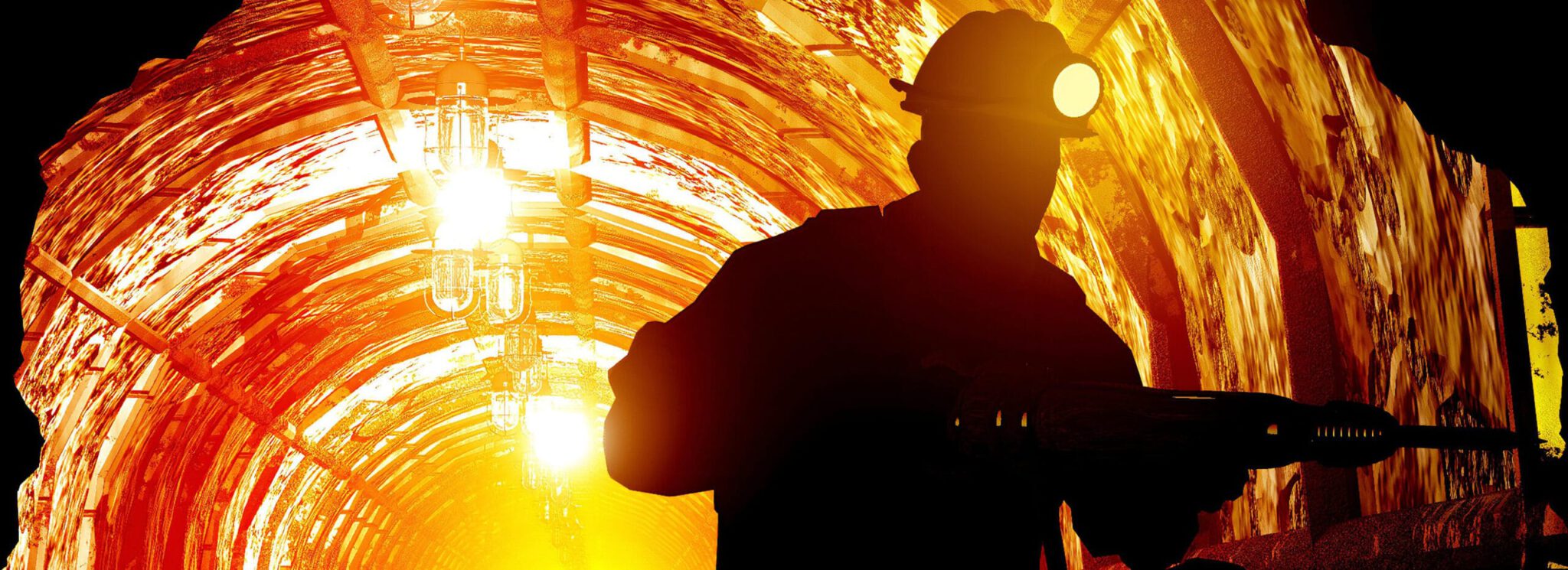Surface mining, underground mining, and minerals processing put workers in a hazardous environment. It’s the nature of the job.
Management in just about every mining business has to focus on two things. One is mining safety to protect the health and safety of its mine workers. Two is to ensure the operation remains sustainable. As such, management needs to take steps to ensure safety and security while getting the best return on security investment (ROSI).
Security Challenges in Mining Industry
Mining operations in the U.S. and Canada are not likely to encounter the threats from extremists and politically charged environments found in the likes of Africa, Greece, and Mexico. However, they still face risks that require investing in mining security.
To benefit from security in mining, a company must consider how it will protect its workers and maintain their safety all while safeguarding the company’s operations and assets. Staying on top of current mine conditions and the locations of its workers are two of management’s biggest challenges.
Mining involves working with combustible materials. To ensure the safety of its workers, mining companies must implement and follow processes and procedures in the handling of combustibles. Training on these is essential.
Another challenge for the mining industry is the environment. Mining is carbon-intensive. It’s now possible to reduce the carbon footprint, increase efficiency, and lower costs by using renewables with battery storage and thermal generation. Nonetheless, some mining businesses may find themselves encountering environmental protestors who may not be aware of their efforts to reduce the carbon footprint.
The industry deals with a host of challenges that can impact safety and security. Compliance is one. Being prepared for the unexpected is another. Mining companies need to have an emergency response process for times when an unexpected problem or severe weather conditions pop up.
Some mining sites may be in a remote area of the U.S. or Canada. This can sometimes cause problems with telecommunications. Besides that, being in a remote location could make a site ripe for theft and vandalism. Intruders find their way to the site after-hours thinking they’ll never get caught as no one is around for miles.
How to Boost Security in the Mining Industry
It turns out investing in mining security can result in growth. Two years ago, G4S invested in mine security solutions. The outcome? Mining Technology reports the company has seen a 50 percent growth in its mining division.
The most effective way to maximize security in mining is by taking a layered approach using the right security solutions. Here are nine steps to implement mining security that optimizes your ROI and security.
1. Document Mining Security Risks
The first thing to do is to conduct a security assessment. The information you gather from the assessment will help you create your mining security plan. An assessment identifies the risks, outlines what you have in place, and highlights what’s missing. The assessment includes a map of your mining property. Make note of any security features you have such as cameras, lighting, and gates.
Document how employees, visitors, suppliers, and delivery services enter and leave the property. It’s vital to create a process on how each group comes and goes on the property. You want it to be as frictionless as possible for people to get to your property. And to do so without sacrificing security that puts your property at risk for theft, vandalism, loitering, and other problems.
It’s worth working with a security consultant on a risk assessment. Security is complex and you want an accurate, thorough assessment that doesn’t miss anything. As you work through the risk assessment and identify potential security solutions, prioritize those solutions. You may not have the budget to do them all at once.
2. Accept That Employees Are a Threat to Mining Security
You know the saying that “You’re only as strong as your weakest link.” Employees are the weakest link. When they don’t follow the processes you’ve put in place, they can create a security hole. They know the operation’s weaknesses and can exploit them.
Background checks should be the norm and included in the security plan. Many companies make this a standard operating procedure (SOP), so it’s not a sign of distrust. New employee training with security is also SOP.
Also, be transparent regarding security because it can help prevent employees from stealing or violating security protocols. Require employees to undergo security training on an annual basis to keep them vigilant about security.
3. Create and Maintain a Mining Security Plan
It’s wise to work with a security consultant in creating your security plan. This isn’t an area in which you want to rely on non-experts. Experts can make sure you have a thorough plan and obtain what you need. It’s easy to overdo it with security or not do enough. An experienced mining security consultant will see that you get what you need.
A security plan is a living document. This means you’ll maintain it and update it as needed. A security plan looks like a lot of work. Nonetheless, it will pay off in saving you a lot of time and frustration when you implement an effective security program.
4. Add a Position with Security Responsibilities
You want one employee whose role is to oversee security. Yes, even if you outsource all of your security. This employee will be your single point of contact for all issues relating to security. The employee is also responsible for maintaining the mining security plan and verifying employees receive training.
5. Document an ID Management and Entry Process
How will employees enter the property? Will you have a security gate with an access control system that works with their IDs? ID badges with the employee’s name and photo are one of the most effective security tools. These should always be visible. It’ll reduce the chances of someone stealing a badge and using it. Security training needs to cover this process and what to do when an employee’s badge isn’t visible. Considering many mining employees do physical labor, verify the badges do not put their safety at risk.
What about clients and visitors? What kind of identification will they wear? They may not have photo IDs unless you can print them onsite. If they don’t wear photo identification, how will you prevent fakes? You also want a process for mail and package delivery. This group needs to get in and out as fast as possible in a way that doesn’t sacrifice security. All of this needs to go into the security plan.
6. Integrate an Access Control System
An access control solution that works with your photo ID system allows you to control who can enter the property. An access control system may or may not work for your mining business. But some may have a gate posted. If so, it may be worth investigating an integrated security system with access control system.
7. Implement Smart Lighting
Lighting is one of the cheapest, easiest, and most effective security solutions. However, not every business does it correctly. Some don’t have enough lighting. Some have too much or too bright. Efficient lighting is not about the number of or brightness of lights. It’s about choosing the right type of lighting and placement.
Another option to explore is motion lighting. It can surprise the intruder like shining a spotlight. Ask your security consultant about lighting. Motion sensor lighting isn’t ideal for every business.
8. Display the Business Name and Address
It’s not always easy to find a mining operation. Still, you want visitors, clients, and package delivery to easily find your property. Considering mining is a hazardous job, you also want emergency personnel to quickly locate your business.
9. Implement Remote Video Surveillance
An effective multi-layered security plan often includes video surveillance. It can close the loopholes in mining. Because effective video surveillance relies on a combination of analytics and human intelligence, it can warn the team before something happens or as it happens.
Trained operators located away from your property watch your cameras and act as needed. Since they’re offsite, they’re not worried about endangering themselves. Instead, they can assess the situation and take the appropriate action. In some cases, they may use a speaker system to warn intruders. When trespassers continue to approach the property, the operator can call the police and directs them to their location.
Monitoring helps management stay on top of the mine conditions and the workers’ locations. If someone gets hurt, a trained operator watching the monitors can alert the onsite personnel.
If there’s a potential safety hazard, the security operator can bring it to management’s attention. Moreover, video surveillance can monitor combustible materials and verify workers handle them safely and properly.
Environmental protestors can show up at a business because the industry is known for a high carbon footprint. You may have taken steps to lower your carbon footprint, but the protestors won’t know that. Video surveillance cameras can alert you to a protest and nip it in the bud before it gets out of hand.
Video surveillance comes in handy in protecting you from liability issues. If someone gets hurt or makes a false claim, video surveillance footage can prove your case. In short, remote video surveillance can do more than deter crime.
Enhancing Mining Security
Video surveillance is a proactive solution that can help avert crime and limit the damage. Trained monitoring operators watching your property can spot trouble before it happens and act. They can call the onsite manager, warn suspects on the speaker, and call the police.
When you do all nine steps, it adds layers of security to protect your employees, assets, and operations. It can lead to a faster ROI in your mining security. It can catch problems earlier, before costs spiral.
If you’d like to discuss your requirements or meet with a security consultant, please contact us.

